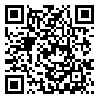Wed, Jun 18, 2025
[Archive]
Volume 6, Issue 3 (Summer 2009 2009)
IJMSE 2009, 6(3): 35-43 |
Back to browse issues page
Download citation:
BibTeX | RIS | EndNote | Medlars | ProCite | Reference Manager | RefWorks
Send citation to:



BibTeX | RIS | EndNote | Medlars | ProCite | Reference Manager | RefWorks
Send citation to:
B. Mirzakhani,Mohammadi, H. Arabi,S. H. Seyedein, M. R. Aboutalebi, M. T. Saleh, Sh. Khoddam. COMPUTER AIDED OPTIMIZATION OF SPECIMEN GEOMETRY OF HOT TORSION TEST TO MINIMIZE MICROSTRUCTURE NONHOMOGENEITY AND TEMPERATURE GRADIENT BEFORE DEFORMATION. IJMSE 2009; 6 (3) :35-43
URL: http://ijmse.iust.ac.ir/article-1-200-en.html
URL: http://ijmse.iust.ac.ir/article-1-200-en.html
Abstract: (47500 Views)
Abstract:Optimization of specimen geometry before subjecting it to hot torsion test (HTT) is essential for minimizingnon-uniform temperature distribution and obtaining uniform microstructure thought the specimen.In the present study, a nonlinear transient analysis was performed for a number of different geometries andtemperatures using the commercial finite element (FE) package ANSYSTM. FE thermal results then were applied tooptimize HTTspecimen produced from API-X 70 microalloyed steel taking into account the microstructurehomogeneity. The thermodynamic software Thermo-calcTM was also used to analysis solubility of microalloyingelements and their precipitates that may exist at different equilibrium conditions. In addition the behavior of austenitegrain size during reheating was investigated. The results show high temperature gradient occurred in long specimens.This could lead to non homogeneous initial austenite grain size and alloying element or precipitates within the gaugesection of the specimen. The proposed optimization procedure can in general be used for other materials and reheatingscenarios to reduce temperature. This then creates more homogeneous initial microstructure prior to deformation andreduces errors in post processing of the HTTresults
Keywords: Hot torsion test, temperature gradient, Geometry optimization, Simulation, Microalloyed steel
Type of Study: Research Paper |
Subject:
Ceramic Materials and Engineering
Send email to the article author
| Rights and permissions | |
 |
This work is licensed under a Creative Commons Attribution-NonCommercial 4.0 International License. |






